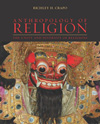
Language, Belief, and Religion |  |
Chapter Summary- Religious ideologies depend on the existence of language, through which they are expressed and communicated from one generation to the next. Those meanings are communicated both with signs and with symbols. Religious beliefs may be passed on orally or, in some cases, through religious texts as well. Religious ideologies are important because they influence the way we perceive the world.
- Religious beliefs, like those of any ideology, arise from a process of interpreting experiences. Belief is never merely a knowledge of the facts that we experience, but are a product of how we interpret those experiences.
- All religious ideologies include a mix of literalist and figurativist interpretations. Literalist interpretations are those that the interpreter takes to be the Aface value@ or nonmetaphorical of an experience or religious text. A figurativist interpretation is one that takes the meaning of a text to be metaphorical rather than literal.
- Interpretations of religious texts may be either ethnocentric or culturally relativistic. Ethnocentric interpretations assume that the cultural background of the interpreter is the appropriate frame of reference for understanding the text. A culturally relativistic interpretation attempts to understand a text in the context of the culture in which it was created.
- Religious beliefs often involve anthropomorphic thinking. In fact, religion may be defined as "the systematic application of human-like models to nonhuman in addition to human phenomena", that is, the systematic use of anthropomorphism.
- Religious diversity exists within each religious tradition as well as among different traditions. In religions with oral religious traditions, geographical differences in religious beliefs, values, and traditions arise as they are passed from one generation to the next. Adaptation of religious ideologies to local settings and conditions is an important part of this process of change. In religions that rely on sacred written texts, internal religious diversity is both geographical and hierarchical.
- The language of liturgical orders is a special case of the more general category of the ritual language of a culture. Ritual language is a restricted linguistic code, one that is particularly effective at building rapport, establishing the place of individuals within a group's hierarchy, and coordinating group interaction.
- Religious language includes linguistic taboos, things that are not to be said, as well as standard ways of saying things.
- Ritual language includes prayer, song and chant, exhortation, reciting the code, and glossolalia.
- As a system of symbols, every religious ideology includes paradoxes, assertions about reality that are true only if they are false.
- Religious texts may be oral or written. Written religious texts may come to be viewed as sacred and their official interpretation perceived as the standard against which orthodoxy of belief and practice is to be measured.
- Since language changes, the original language of sacred religious texts will eventually become inaccessible to contemporary readers. Translating ancient religious texts includes problems concerning determining what works are to be considered canon, the choice of which early text of various early versions that may exist, decisions about how best to interpret the text, and the style that the translation should adopt.
|
|
|